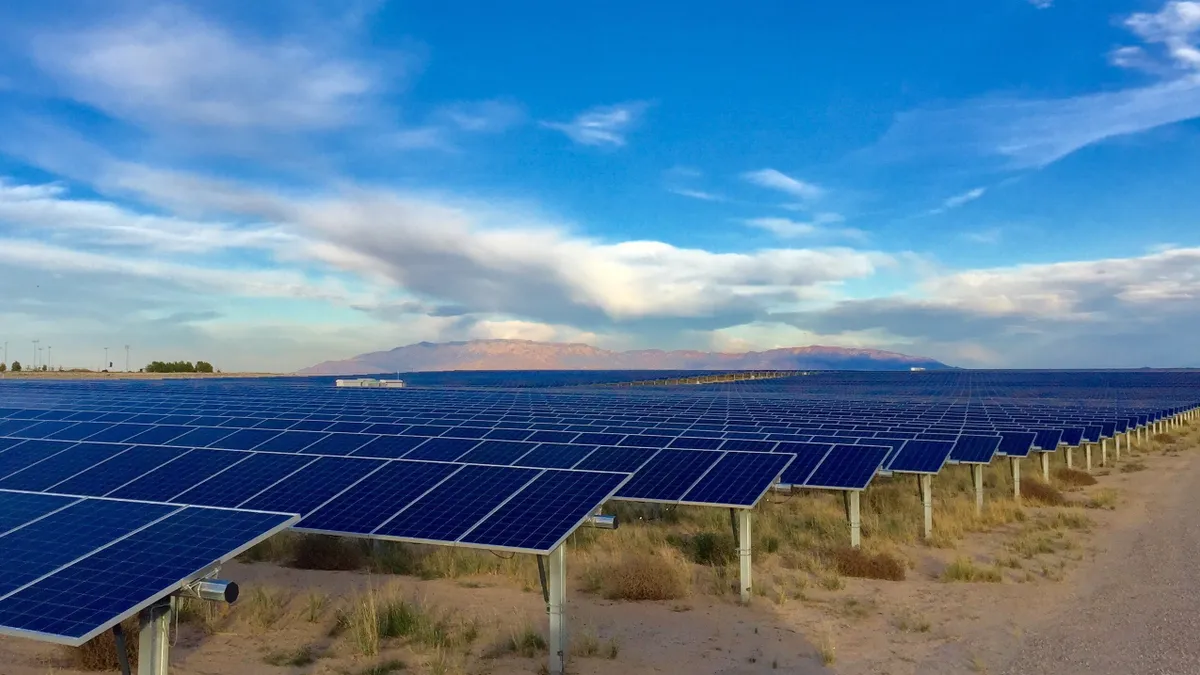Dive Brief:
- Coal production is anticipated to fall 25% in 2020 due to slowed industrial production under the current economic recession, according to the U.S. Energy Information Administration's short-term outlook released on Tuesday.
- Meanwhile, the U.S. solar market hit a record in Q1 of this year, installing 3.6 GW, according to a Thursday report from the Solar Energy Industries Association (SEIA) and Wood Mackenzie. Though overall installations are expected to fall in 2020 compared to 2019, utility-scale solar's strong performance is expected to boost the sector's growth by 33% this year, SEIA and WoodMac found.
- EIA forecast solar and wind energy will be the "fastest-growing source of electricity generation in 2020," projecting the installation of 23.2 GW of new wind capacity and 12.6 GW of utility-scale solar capacity, slightly less than SEIA and WoodMac's estimate of over 14 GW.
Dive Insight:
The coronavirus pandemic and ensuing economic recession have led to dramatic shifts in power demand across the electricity sector this year, while supply chain and labor disruptions have impacted power resources across the board.
Coal-fired generation was previously in decline due to poor economics compared to the growing wind, solar and natural gas industries, but a drop in industrial demand will lead the coal sector to take a large hit this year, according to EIA. Commercial electricity sales are expected to drop 9.1% in 2020 and industrial sales are expected to dip another 6.7%.
Coal is expected to make up 17% of the electric power generated in 2020, down from 24% last year. However, the fuel is expected to bounce back slightly in 2021 as power loads return to normal, likely making up 23% of the U.S. electricity mix that year, according to EIA.
Natural gas, wind and solar will largely make up the 2020 gap, the agency predicts.
Natural gas will supply 41% of U.S. electricity this year, up from 37% in 2019, and then taper off to 36% in 2021 due to higher prices. Wind and solar supply are expected to see a steady increase from 17% in 2019, to 21% in 2020 and 23% in 2021, EIA predicts.
But solar will still take a hit this year due to the COVID-19 crisis. Solar additions in Q1 represented 40% of all power sector additions that quarter, according to SEIA, but nonresidential storage markets are expected to drop anywhere from 25% to 38% this year due to delayed construction, reduced customer demand and issues with tax credit qualification.
"This year was expected to be a banner year for residential solar PV before the coronavirus pandemic hit," according to the report. 810 MW were installed in Q1 "bucking the historical trend of seasonal cyclicity" in which rooftop solar installations drop in winter months, the report found. Stay-at-home-orders near the end of the quarter likely prevented the sector from adding even more capacity, according to SEIA and WoodMac.
Overall, residential installations are expected to drop 25% in 2020 compared to 2019, with a 26% growth in 2021, "as the market begins to experience a tepid recovery." Relative to the sector's 2019 review, the solar industry is expecting a 3.6 GW loss through 2025.
"While the utility segment shows promise with sustained levels of procurement so far, lower energy demand due to productivity loss and wholesale electricity market price drops will add to the uncertainty," Ravi Manghani, head of solar at Wood Mackenzie, said in a statement.
"All in all, the pandemic and the ensuing economic slowdown will weigh heavily on the solar industry in the coming months if the economy is slow to recover and financing dries up."
The solar and wind industries have been vying for the federal government to implement changes to the federal investment tax credit and production tax credit that give the sectors more flexibility on deadlines and allow those industries to secure financing more easily.
The Internal Revenue Service last month released guidance granting renewable energy projects that began construction in 2016 or 2017 another year to meet safe harbor deadlines for the production and investment tax credits, as well as a safe harbor extension for the solar investment tax credit.















